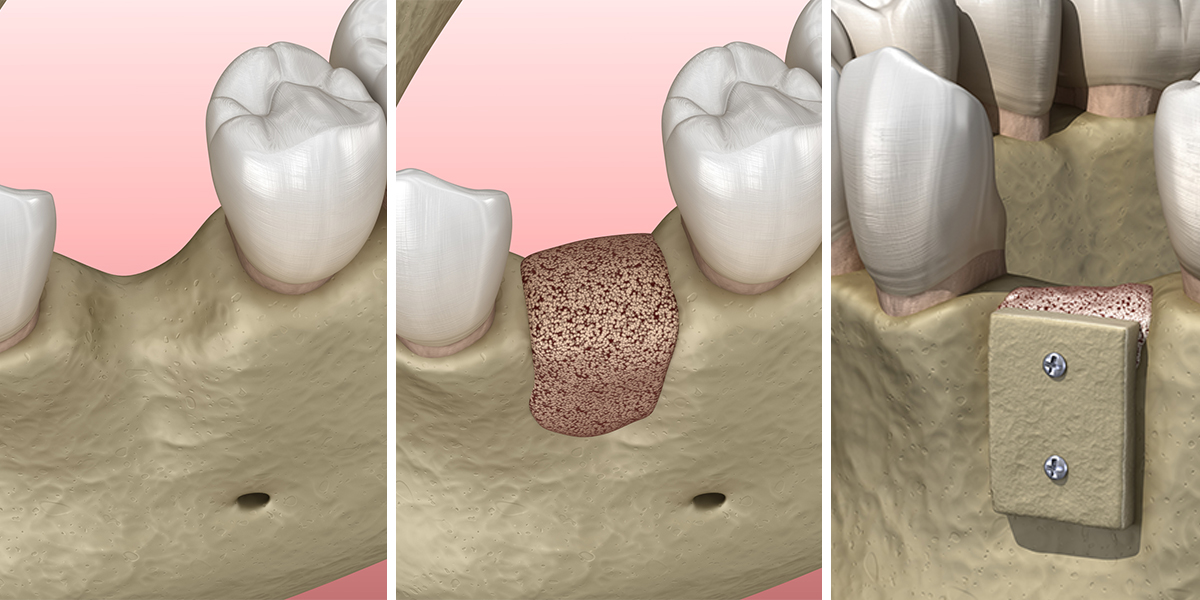Bone Grafting

Bone grafting may be required to address defects in a patient’s jaw. Bone grafting is a form of reconstructive surgery that helps to generate and rebuild bone and increase bone density.
Bone grafting surgery is performed to correct problems that may be the result of:
- Defects present from birth
- Trauma
- Placement of Dental Implants
- Tooth loss and subsequent loss of bone in the related jaw area
Minor Bone Grafting
The most common bone grafting procedure is performed to enhance the upper or lower jaw bone in order to increase bone quantity and density in preparation for the placement of dental implants.
When a tooth is lost, the surrounding bone often is often affected over time. Patients without enough jaw bone mass are not candidates for dental implants. Bone grafting is often performed to reverse bone loss or enhance existing bone, allowing for the placement of dental implants after the bone graft has healed and created the necessary foundation for the implants.
Bone grafting for the purpose of rebuilding jaw bone to support dental implants can usually be done in our office. The surgeon may recommend that the grafting material be taken from the patient's own bone or from another source. Synthetic material can also be used to generate bone growth. Bone grafting allows for proper support of dental implants or prostheses. Healing time prior to the placement of the implants is generally between 4 - 6 months, though it can sometimes take longer.
Major Bone Grafting
For more extensive bone grafting procedures, a hospital setting is required and grafting material may be taken from other areas such as the skull or hip.
Bone Grafting Procedures
SINUS LIFT
A sinus lift, also sometimes referred to as sinus augmentation, is performed when there is a need to increase the amount of bone structure in the molar and/or pre-molar section of the upper jawbone. This surgery is usually performed for the purpose of supporting a dental implant, which can be placed once the bone has healed and shows sufficient density and mass to support the implants.
SOCKET PRESERVATION
Socket preservation is a procedure performed after an extraction to help reduce bone loss. Bone grafting material or bone growth enhancing elements are placed into the socket where the extracted tooth was removed to prevent resorption of bone and to stimulate your body’s own natural capacity to regenerate bone. Bone resorption can cause interfere with plans for restorative treatments such as dental implants, crowns or bridges. These restorations require a solid support system and socket preservation can help provide a dependable foundation.
RIDGE AUGMENTATION
Ridge Augmentation involves placing a regenerative bone grafting material into and around the empty tooth socket immediately following an extraction. This type of bone graft is used to to rebuild the ridge of bone that is left weakened and unsupported. Augmentation can help rebuild the natural lines of the bone and can also help re-establish the bone’s width and height for a future dental implant.
